
1,846 views
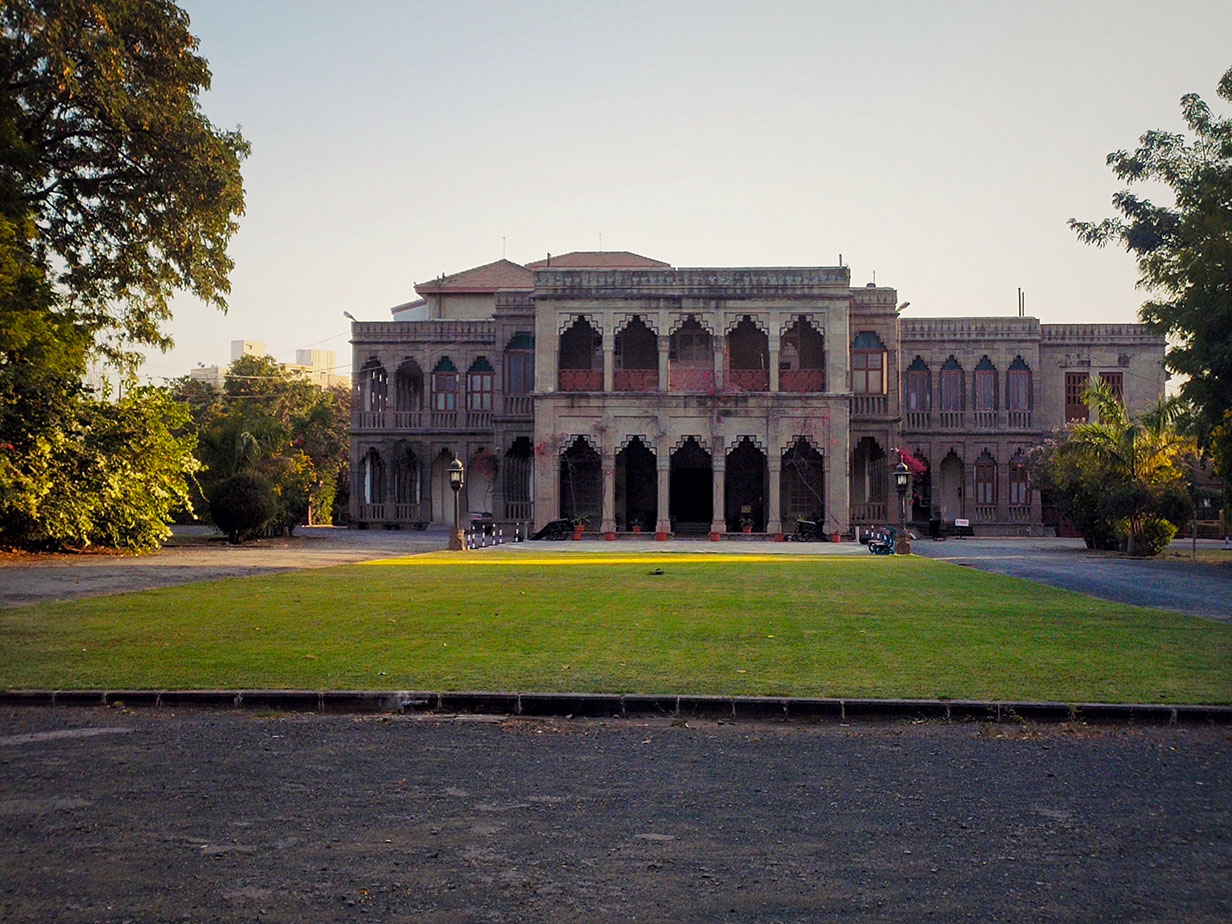
The Erstwhile Princely State of Bhavnagar
By Anand Maniyar
Last Updated: 01 Feb 2021
Bhavnagar, once a Princely State, now a tier-2 city, lies on the western shore of the Gulf of Khambhat (Cambay). History bestows Bhavnagar with a special mention when India got freedom from British rule and it faced a challenge to convince the rulers of 565 princely states to accede their kingdoms into the “Dominion of India”. The last princely ruler, Sir Krishnakumar Sinh agreed as recommended by Gandhiji and Bhavnagar became the first ever Princely State to join Dominion of India. This is a laid-back city to unwind and enjoy pristine beaches, striking mountains, and flora & fauna. It has a rich history with centuries-old heritage and pilgrimage places. Bhavnagar is off the tourist radar and I have reasons to be upset with the trend. Being born and having lived here for a better part of my life, and being an avid traveler, I feel this story will help travelers discover a fine offbeat destination. This is my way of giving back to the city that has given me everything in my life.
The best way to start your visit to Bhavnagar is by visiting the iconic Hotel Nilambag Palace, a taste of the imposing imperial glory of the yesteryears. Designed by German Architect, Simsom and constructed in 1879, it has remained home to the erstwhile royal family for generations. It is a unique amalgamation of elements of Indian architecture with a modern look, an elegant blend of luxury and nobility. It was converted into a heritage hotel in year 1984.
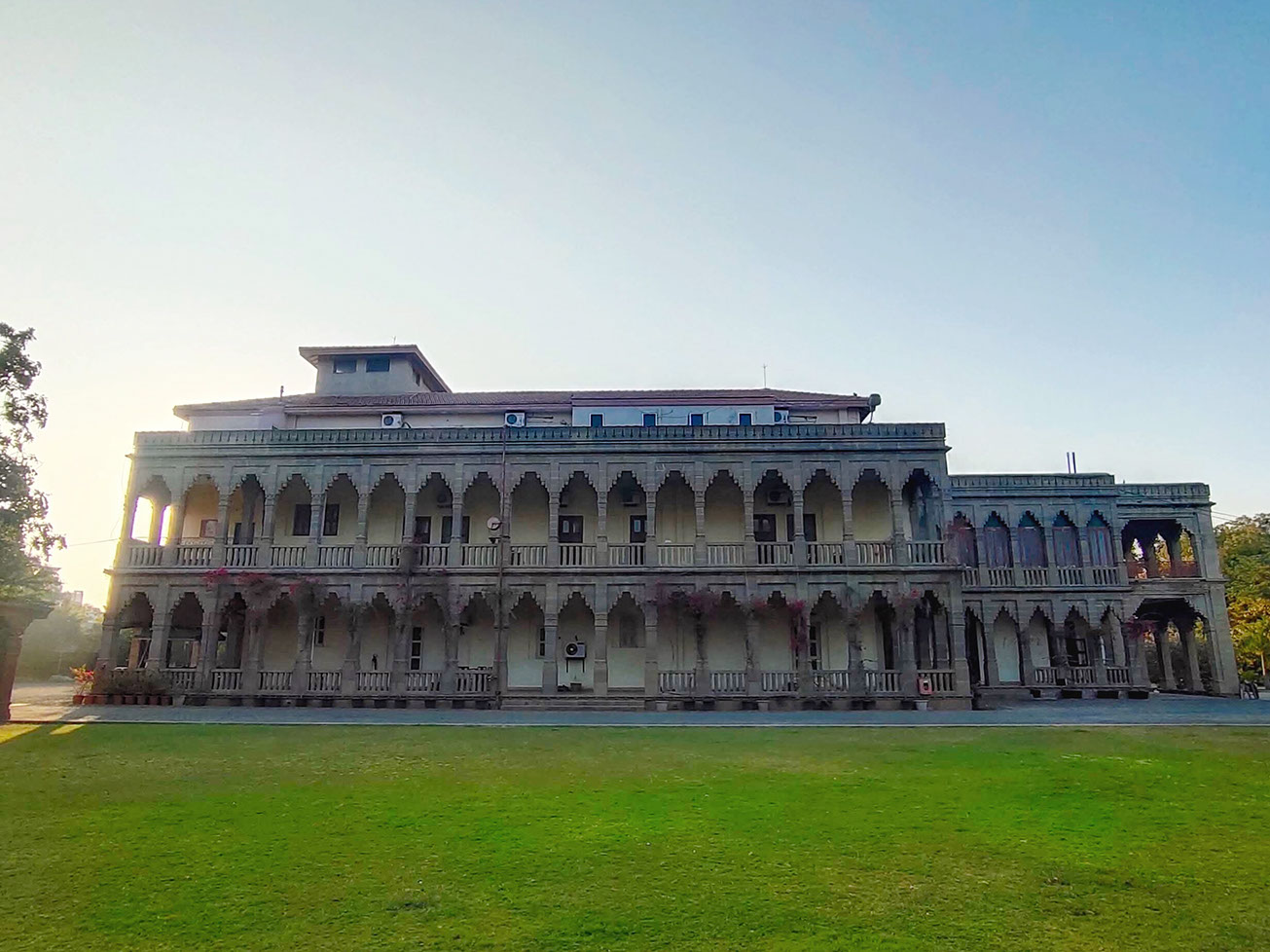
Magnificent rear view of the Regal Grandeur, the Nilambag Palace spread across 10 acres, made of Rajula stone.
Bhavnagar is a relatively small city so traveling from one place to another is usually pretty quick. There are no places far away except the ones at the outskirts of the city. There are good hotel accommodation options in Bhavnagar owing to Alang Ship Breaking Yard. Another notable heritage place to visit is Takhteshwar temple perched atop a small hillock. It was built in 1893 by the then King Takhtasinhji, hence named after him. Since it is a Lord Shiva temple the name ends with "eshwar". The entire temple is built using marble stones with its main hall supported by 18 ornate pillars. One can witness beautiful carvings on the marble, which are more than a century old.
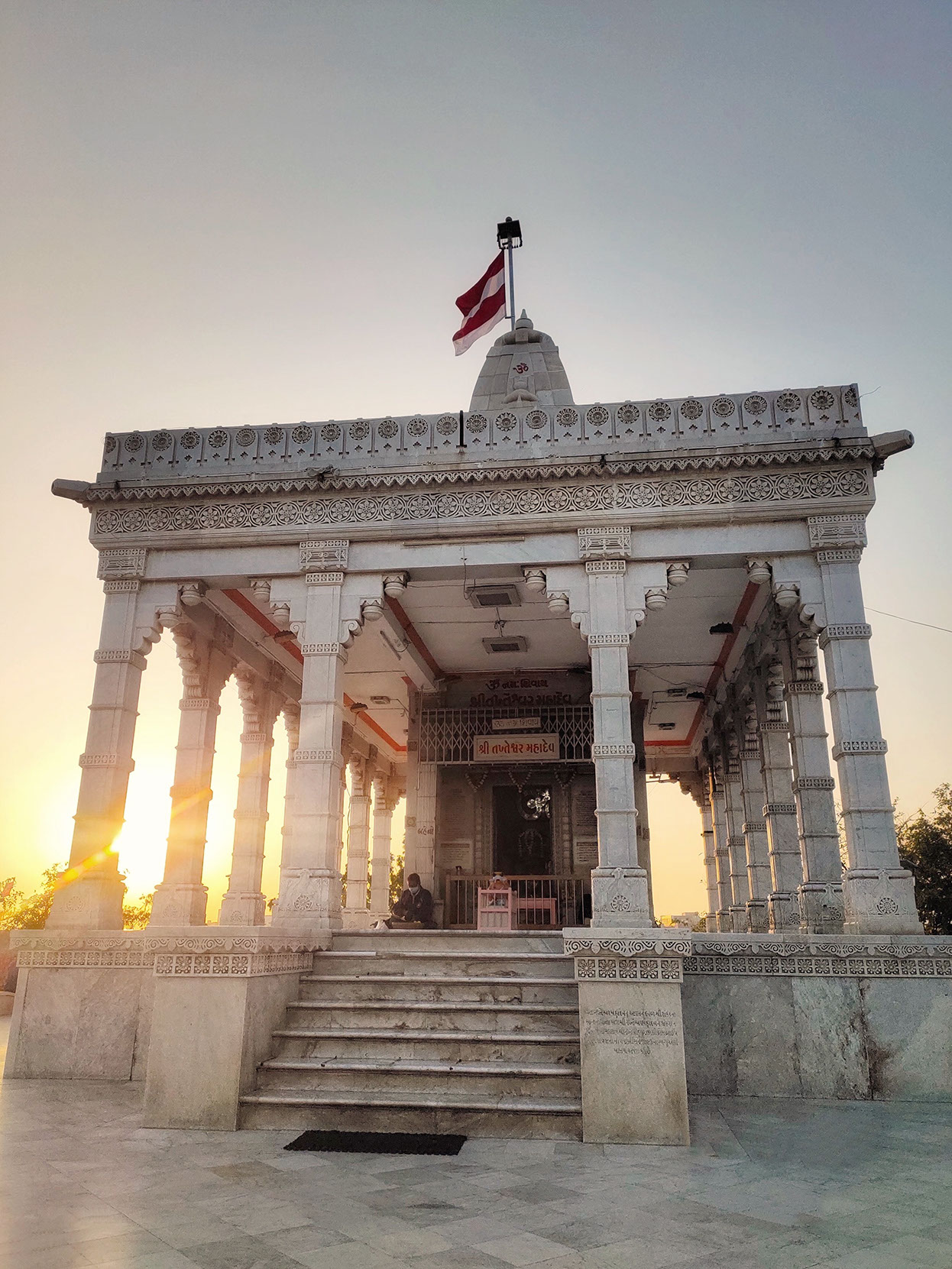
The marble structure of Takhteshwar temple is an ambience of peace and tranquility.
The temple can be entered through a semi-circular route from the base. It can be accessed through marble stairs from one side and by vehicle from the other side. A stunning view of the city and the Gulf of Cambay awaits you at the top. The evenings are pleasant with the breezy hilltop offering you an oasis, especially when the sun is setting.
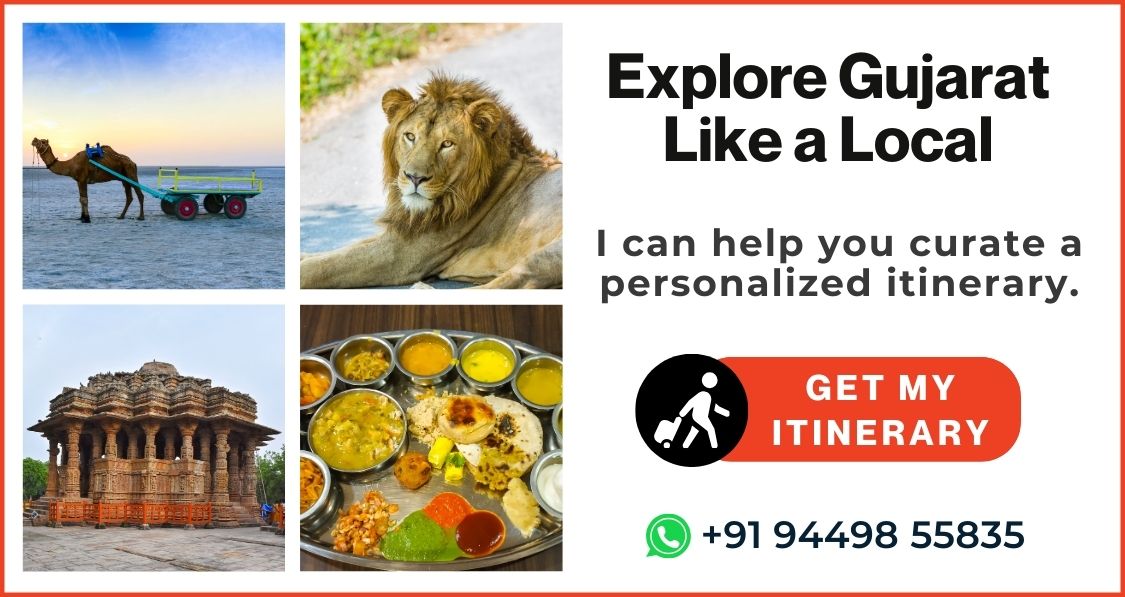
Mahatma Gandhi's connection to Bhavnagar
There are many places to visit in Bhavnagar. But if you like to take a walk down memory lane then you must visit Gandhi Smruti (Gandhi Memorial). Mahatma Gandhi had a direct connection with Bhavnagar during his early days. He went to the University of Bhavnagar for a brief period. The then deputy Prime Minister of India Sardar Vallabhbhai Patel laid the foundation stone of Gandhi Smruti on 15th January 1948. The monument was made open to public in 1955. It has a huge picture gallery showcasing authentic memorabilia pertaining and belonging to Gandhiji like books and rare photos of Gandhiji's life. It also houses an expansive Barton Museum with a repertoire of archeological remains belonging to Saurashtra region and a library with good collection of books.
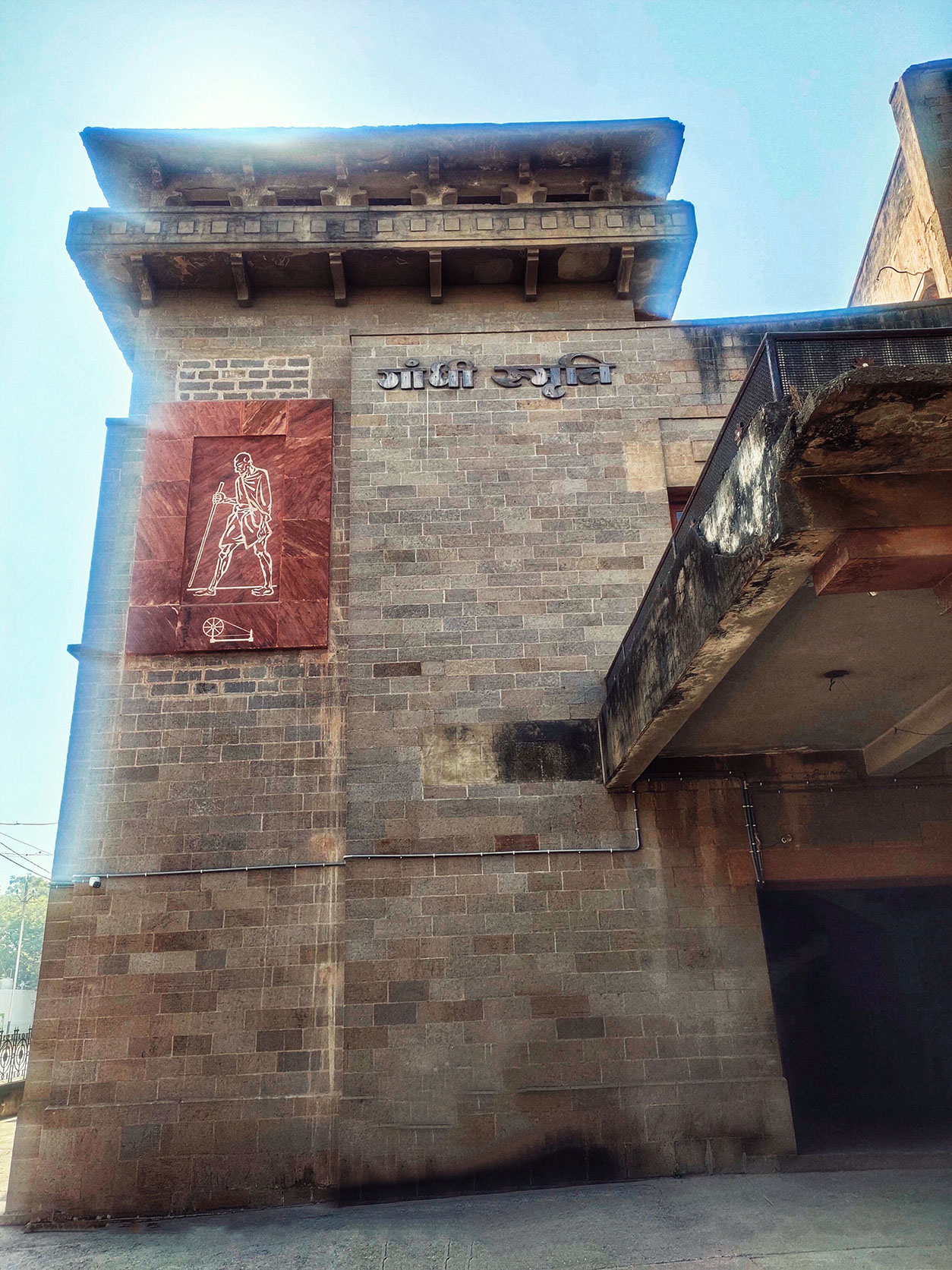
Gandhi Memorial: An iconic landmark of Bhavnagar inaugurated by Jawaharlal Nehru in 1955 when he was Prime Minister
Gandhiji was a staunch advocate of Khadi (a natural, hand-woven cloth) as a way to self-reliance. He is popularly picturised weaving on the Khadi Charkha. When we talk about Gandhi Memorial, Khadi is associated with it by default. There is a Khadi Bhandar (shop) as part of the memorial where one can find an array of high quality local handicrafts, embroidery products and garments made out of Khadi material, all with local and authentic taste. This is also a great place to collect souvenirs.
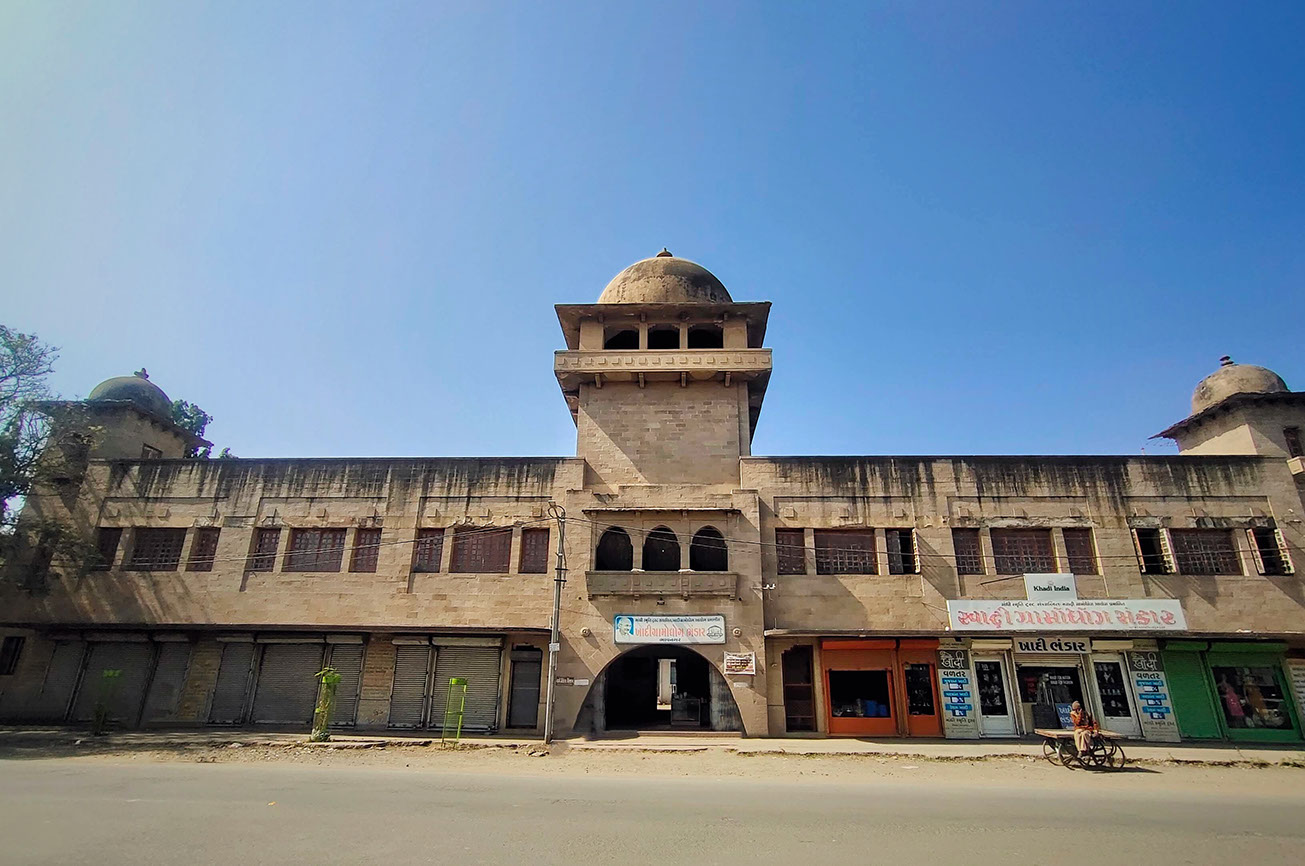
Khadi Gramodyog Bhandar (Khadi market): the place is still buoyant with Gandhiji's philosophy of self-reliance.
Bhavnagar - a nature lover's paradise
Bhavnagar is also a bird watchers' paradise. There are a few sites where you can spot diverse local and migratory birds. One of them is the semi-forested area of Victoria Park. The pond known as "Krishnakunj Talav" in the center of the park is the place to watch beautiful water birds and spend some leisure time early morning. Water bird species like Pond Heron, Egrets, Ducks, Grebes, Little Cormorants, Purple Swamphen, White Breasted Waterhen, Painted Storks and many more are easily located here. The park is spread across 500 acres of rich biodiversity with a large population of antelopes and foxes.
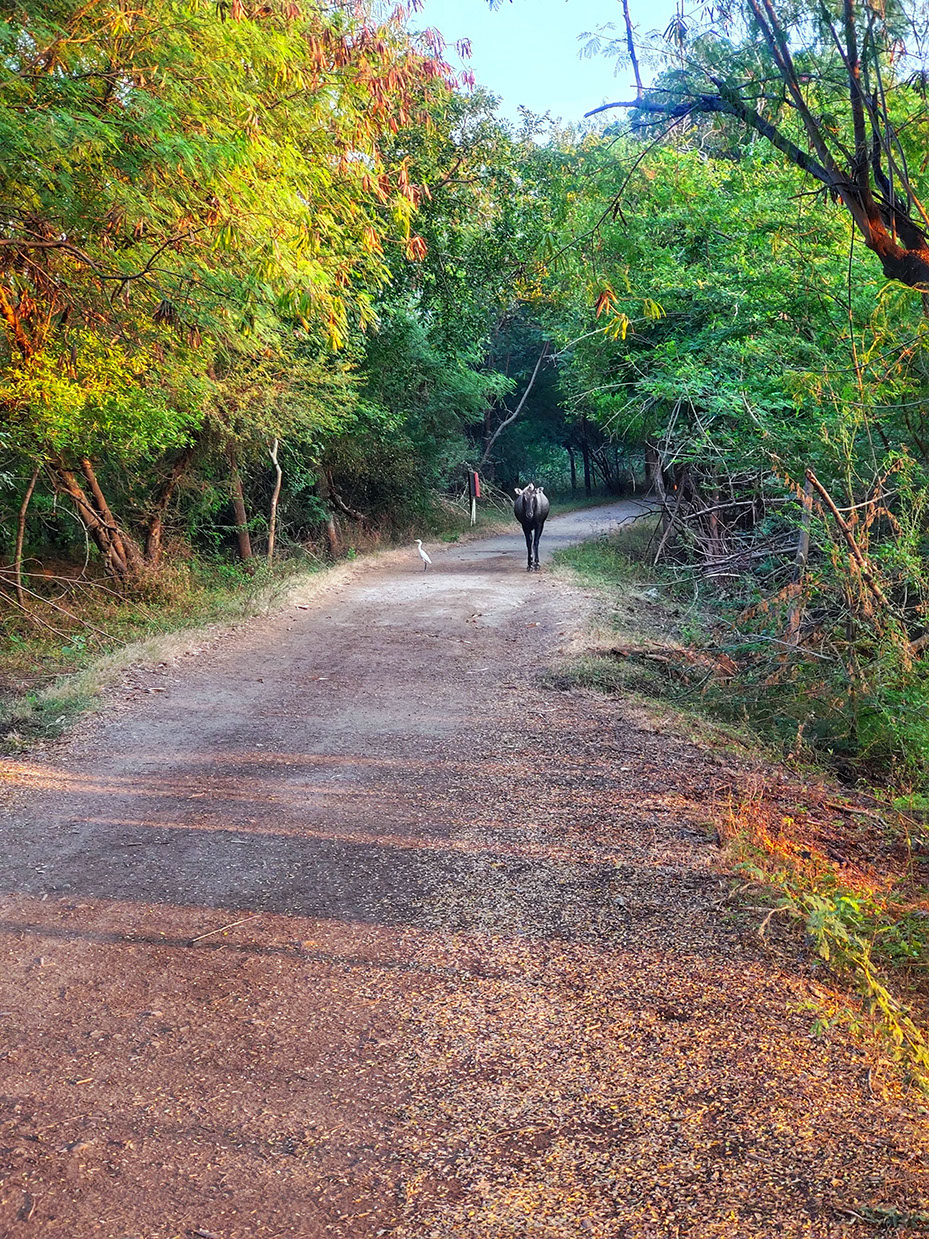
Inside the forestland of Victoria Park where you are likely to encounter the Bluebell (in the picture) & Antelopes.
The forestland was dedicated by Late Maharaja Takhtasinhji Gohil way back in 1886. Today, the park receives an average annual rainfall of 500mm. A climb atop the watchtowers (known as machans) offers you a panoramic view of the park as well as sighting of migratory birds. I am a frequent visitor to this park and have spotted many species like Spot-billed Ducks, Comb Ducks and Little Grebes near the pond. I was lucky a few times to spot some rare species like Black-winged Lapwings, Painted Stork, Common Coot.
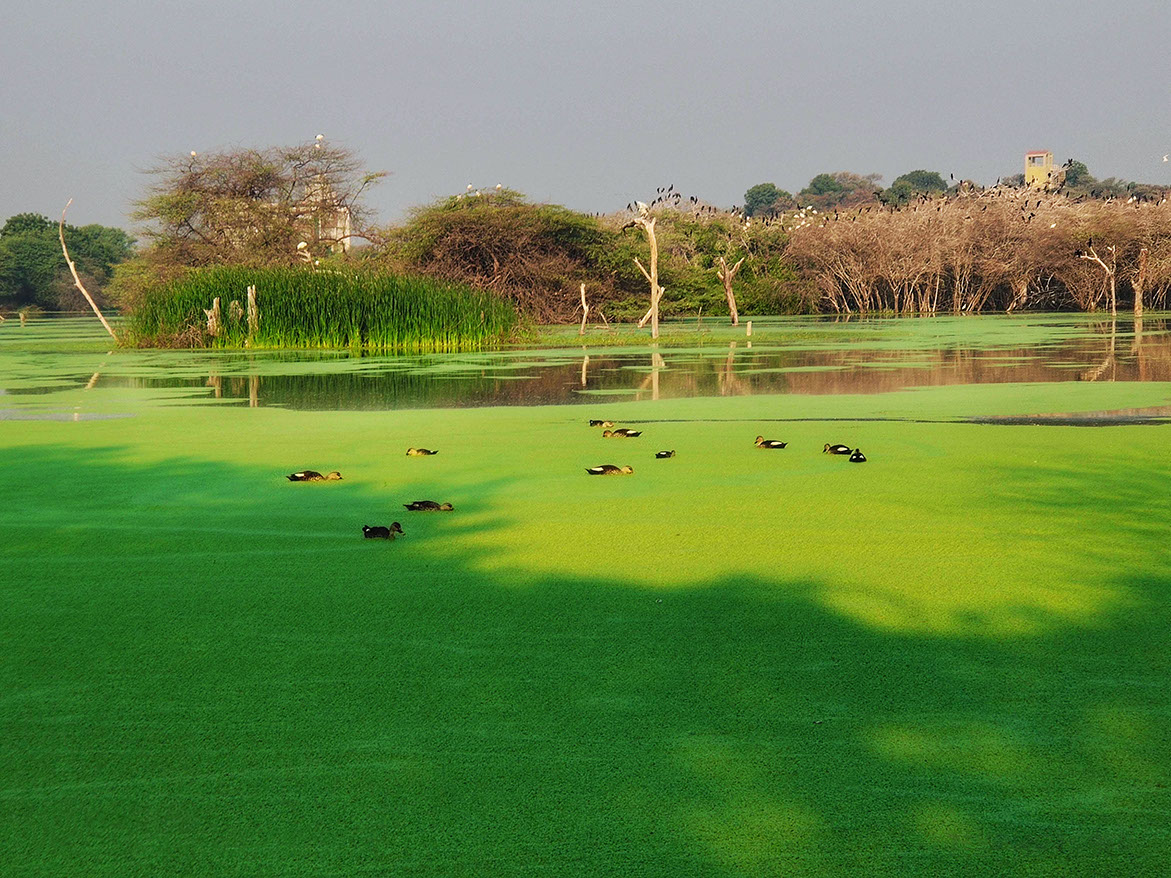
Spot-billed Ducks among the lush green lilies inside Krishnakunj Talav (the pond)
Not many are aware that there is an interior part of Victoria Park, which is the territory of many Peacock families. Peacocks are usually shy of humans and nothing gives you more pleasure than being with them and spending leisure time feeding them with your own hands.
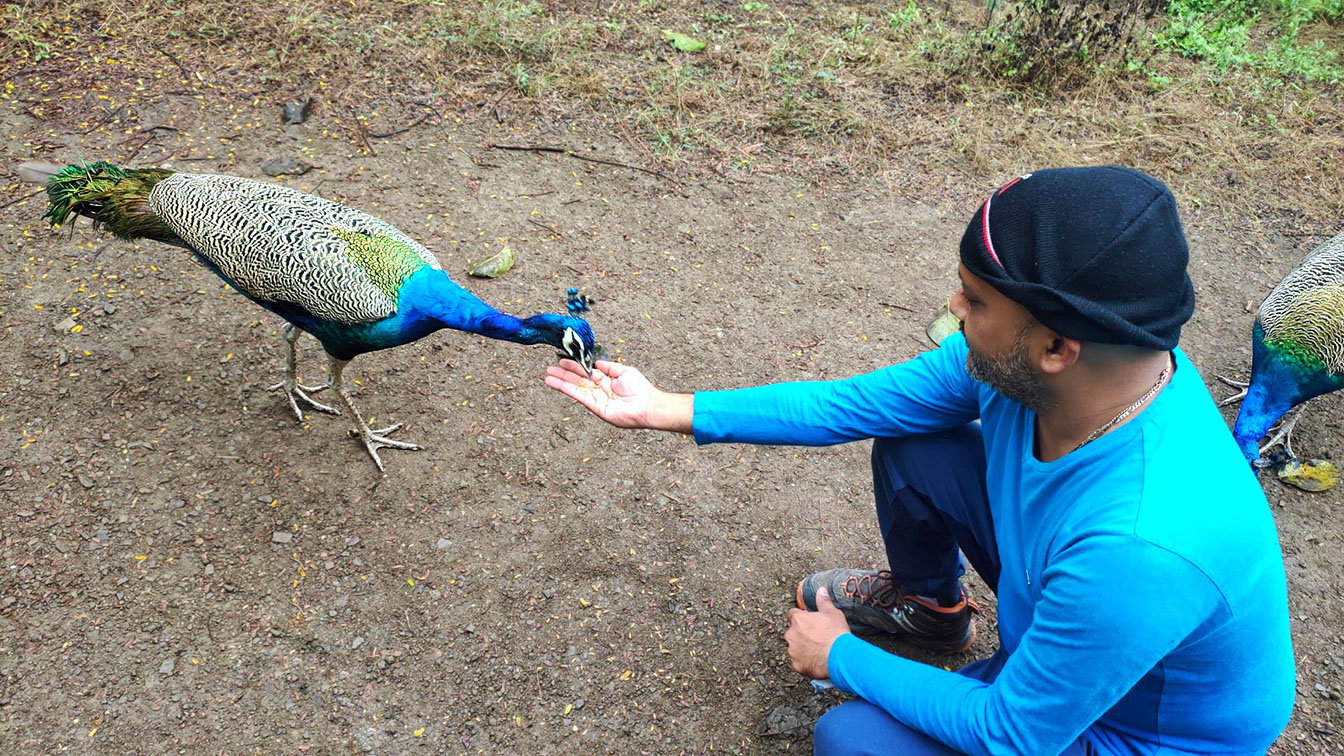
In my favorite place with my Peacock friends who have started recognizing me and are happy to eat from my hand.
There is another fascinating place for bird watchers, an offbeat destination. A new road has been developed between the airport and Bandar (port) called Nava Bandar (New Port) road. This road has a beautiful lake called Port-Road Lake. This place is a new hotspot for bird watching. It also has a long walking path, which has become a jogger's paradise off late. Plan your visit such that you can witness the beautiful sunset at the lake.
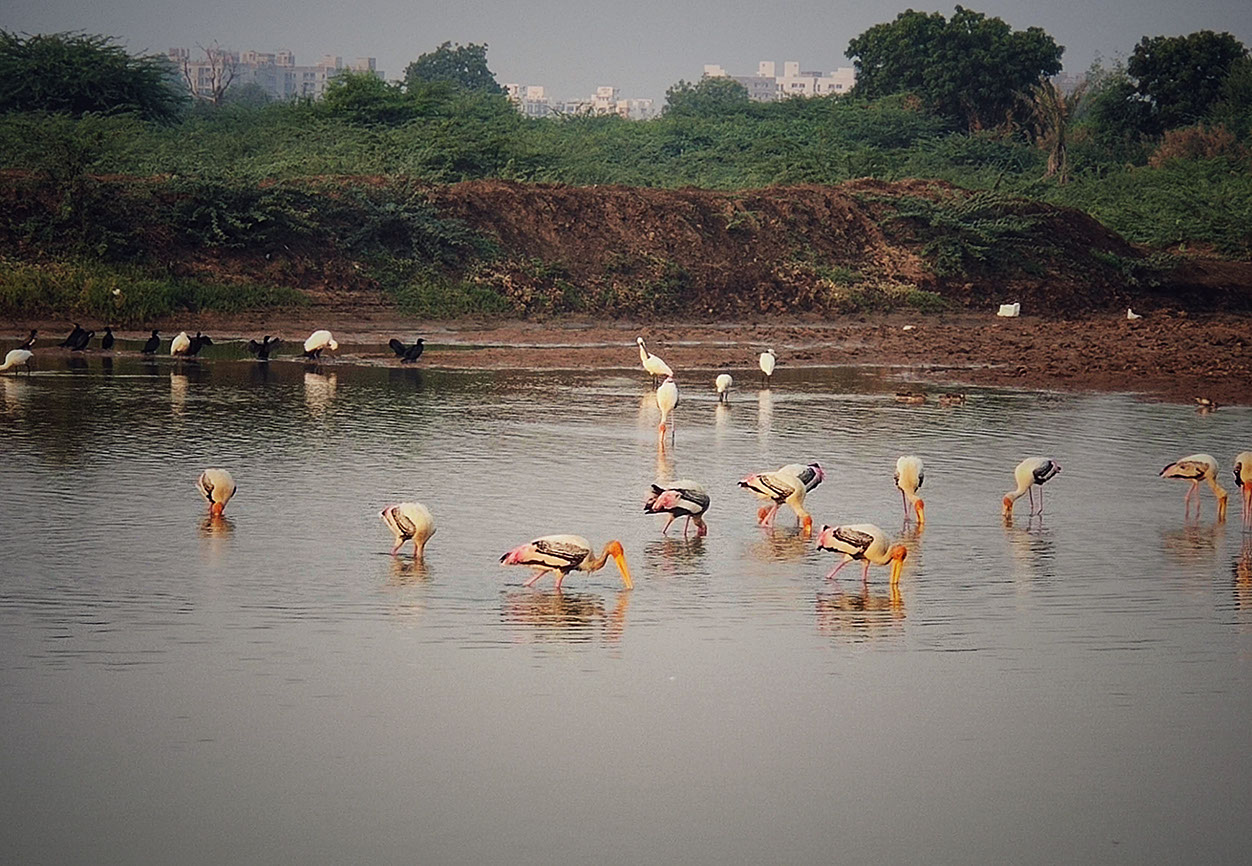
A group of local (Painted Stork) and migratory (Eurasian Spoonbill) birds at Port-Road lake.
Alang Ship Breaking Yard
We all know about ship breaking yards, but there is one, which is considered to be the largest graveyards of ships. Any guesses on its whereabouts? Well, no prize for guessing. Bhavnagar has another WOW for tourists to visit. The beaches of Alang Ship Breaking Yard have become the world's largest ship graveyards where recycling of almost half of all ships salvaged across the globe happen. This includes "Seawise Giant, the longest ship ever built, which made its last voyage to Alang for demolition in 2009. Alang is located about 50 kilometers southeast of Bhavnagar city on the Gulf of Cambay. A herd of ships sail for their last voyage to Alang beaches during the high tide. As the tide recedes, thousands of laborers start dismantling the ships. After the demolition, the scraps including furniture, crockeries, metal, electronics and other valuable assets are sold by the contractors within the designated areas provided to each of them. Visitors are welcome to witness the ship-breaking process as well as buy the goods from Alang. Indian Navy's prestigious aircraft carrier INS Vikrant has recently embarked its final voyage to Alang and is currently undergoing the demolition process after 30 years of service to the nation.
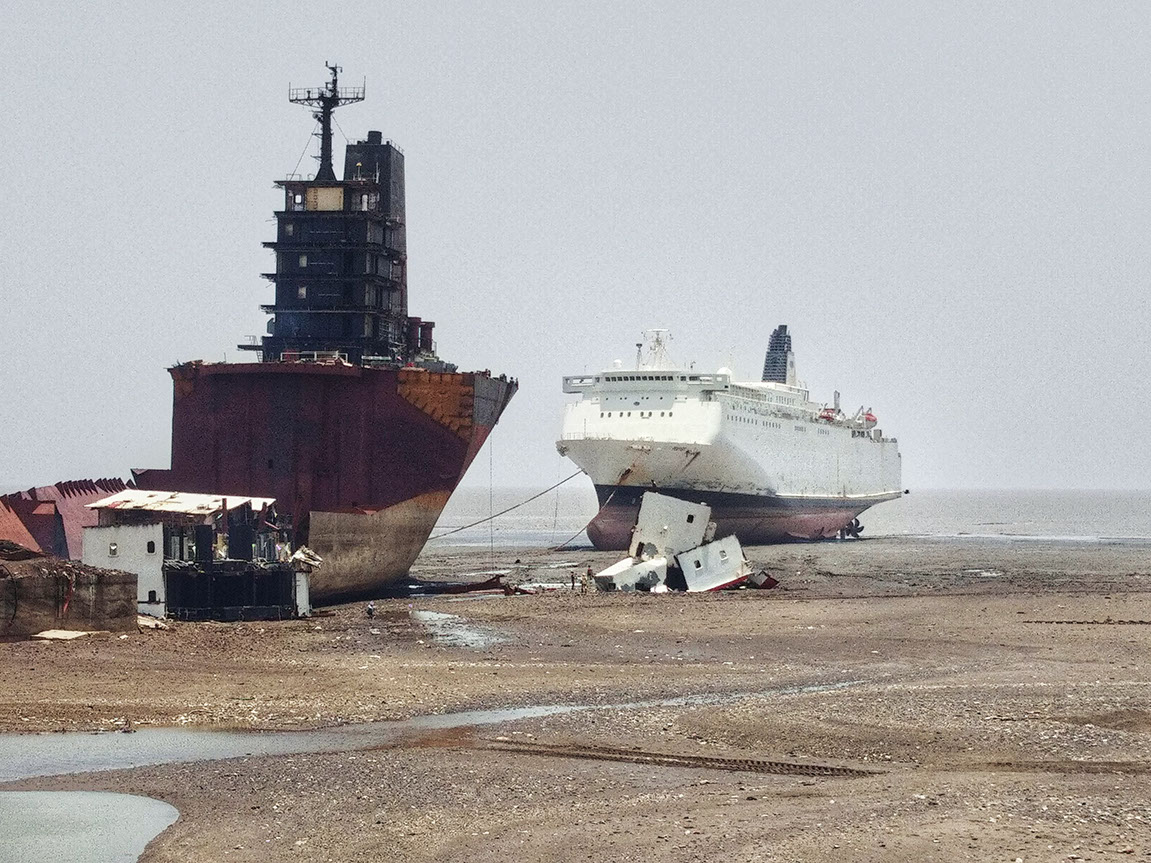
Ship breaking in process at one of the beaches in Alang
Surroundings of Bhavnagar
There are mountains as well as trekking trails in Bhavnagar for nature lovers and adrenaline junkies. One of my favorites is Malnath Mahadev Temple located 25 kilometers from Bhavnagar atop Khokhra mountain range, in the middle of green slopes and meandering streams. A breathtaking, lush green landscape with waterfalls and neighboring windmills offer a perfect trek for nature lovers. Trambak Falls, a cascaded waterfall can be reached through a 5-kilometer moderate trek inside the forest from Malnath Mahadev Temple. The fall cascades down from almost 30 feet height creating a natural swimming pool. It is a perfect place to relax with the sound of the gushing stream among lush green mountains before returning to the temple.
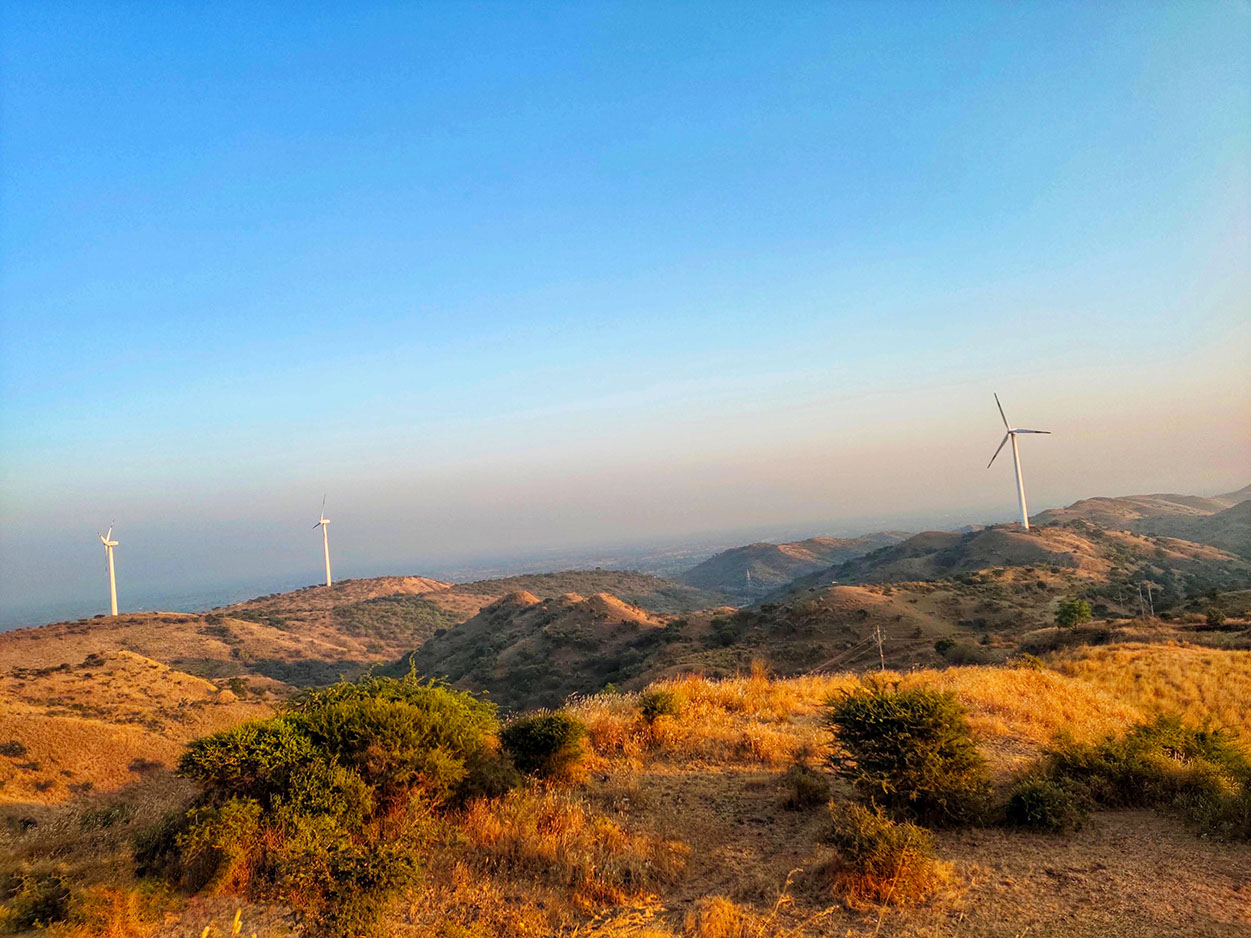
Breathtaking landscape at Mota Khokhra Mountains with the backdrop of windmills.
If you ask majority of the Bhavnagar residents about their leisure plan on any Sunday, you would get a common answer "Bortalav". Gaurishankar Lake, famously known as "Bortalav" is a reservoir that caters to the water requirements of the entire city. The huge and beautiful reservoir was built in 1872 by Gaurishankar Oza, the then Diwan (head of the state) of Bhavnagar. It is spread over 380 hectares on the edges of the vastly spread Victoria Park. For ages, it has been a famous picnic spot in Bhavnagar and has remained so until date. Bhav Vilas Palace in the vicinity of the lake is a heritage building, which used to be the clubhouse of the royal family. Now, it is an official residence of the clans of royal family.
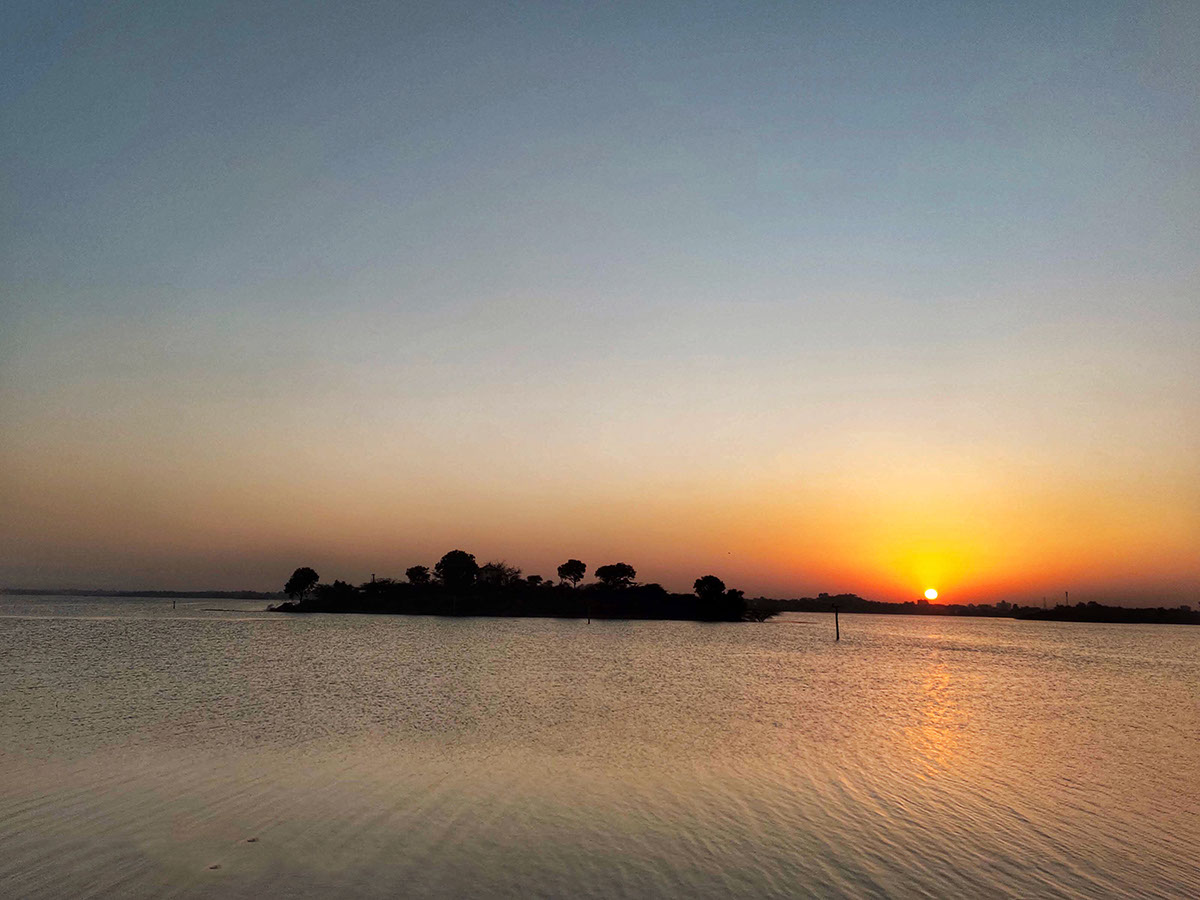
Stunning sunset at Gaurishankar Lake (Bortalav)
Beaches in Bhavnagar
You cannot leave Bhavnagar without visiting its clean and pristine beaches. You will be surprised to know that there are 4 beaches here, but locals are not beach goers, as is the case in other coastal cities. This has led to undeveloped beaches with minimal facilities. This possibly works well for tourists as they can enjoy beaches that are not crowded. All the beaches are around 25 to 30 km away from the hum-drum of city life. Most of them are one-day picnic spots with only Hathab beach catering to overnight stay. There is an old heritage bungalow where people used to stay earlier, but now it is no longer in operation due to Covid-19. Now, there is a small resort near Hathab beach where one can spend a couple of days and enjoy the ocean.
Gulf of Cambay is famous for tidal amplitude (the average difference in water levels at high and low tide). Bhavnagar is located at the maximum tidal amplitude and hence faces frequent tidal variations. Usually, we do not observe this phenomenon to a great extent at other beaches. During low tide, the water recedes deep into the sea. This leaves vast expanses of sand exposed, almost as if the sea has suddenly disappeared. It is highly risky to venture into the sea during low tide, as there is the danger of getting dragged into the sea along with the receding tide. Visiting the beach during low tide to experience this phenomenon is surreal ONLY stay out of the water. One needs to keep an eye on the tidal calendar to hit the beach during high tide if you want to get into the sea and enjoy a swim. The tidal extreme is probably one of the reasons beach culture has not developed with Bhavnagar residents.
Other beaches are Kuda, Nishkalang and Ghogha. Ghogha beach is famous for the Ropex service between Bhavngar and Surat, as both the cities have business ties for diamond trading. The distance by road between the two cities is 360 km, but the same by ship over Gulf of Cambay is just 67 nautical miles. Ropex means Ro-Ro ferry service. The ship can load light motor as well as heavy motor vehicles and passengers, cutting the distance of road travel from Bhavngar to Surat. People from these two cities can travel to and fro in a day through the Ropex service.
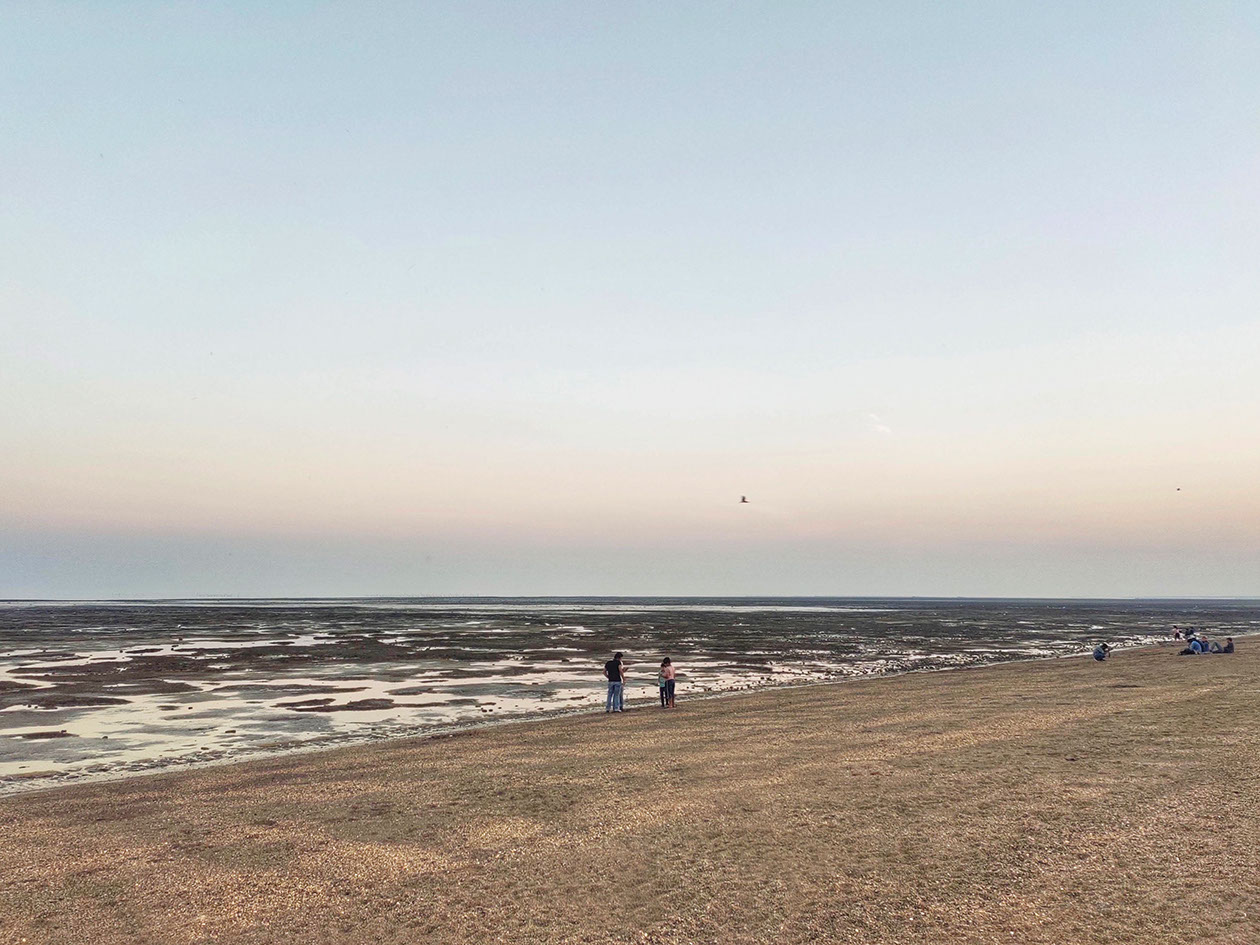
Hathab beach during low tide
A bygone era...
Bhavnagar was founded in 1723 and evolved into an important commercial center and grew into significance taking over from Sihor, the art & culture capital of the region. This is primarily because of the two fold advantage of the sea acting as a defensive measure and a hub for maritime trade. Industrial activities like spinning and weaving mills, metal works, tile and brick factories, sawmills, an iron foundry, and a chemical plant mushroomed rapidly. This beautiful city gradually lost its shine as a commercial hub even though it has a huge geographic advantage. A few days in Bhavnagar with its striking heritage and enchanting tales will leave you enamored and enriched. The cuisine is an added bonus!
Disclaimer: This blog may contain affiliate links. At no extra cost to you, we may get a small commission if you buy anything. All products and services we endorse have been personally used or come highly recommended to us. These incomes allow us to keep the community supported and ad-free.
Things To Consider
About the author
Rate the Story
Related Stories
Please share your comment

Nice story! I do remember my own personal experience feeding peacocks with my own hands. It's amazing to see those birds recognize specific human beings whom they can trust.
Very aptly described with fine details and the affection for the city is echoing in your words. The one thing I would like to add is the people of this city are amongst the most generous, loving and culturally rich you will find.


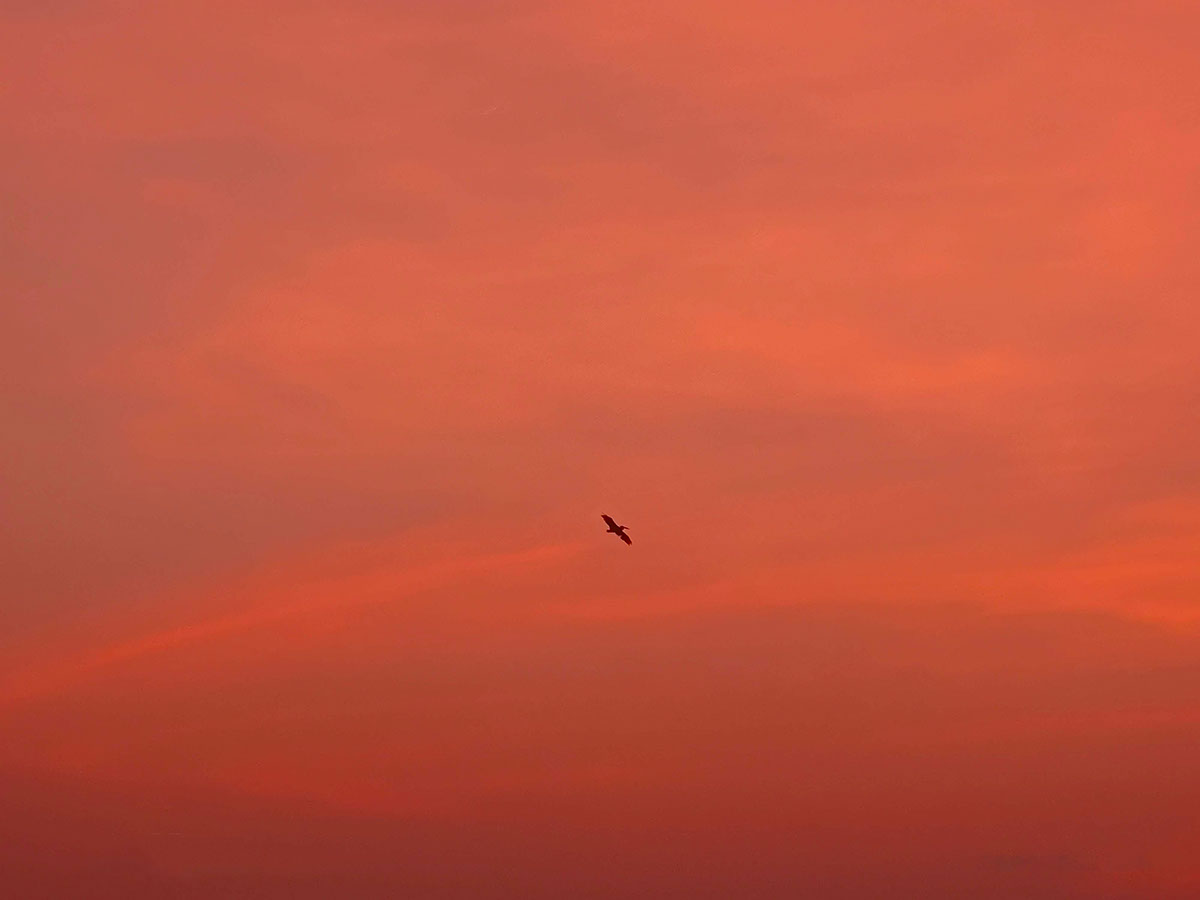
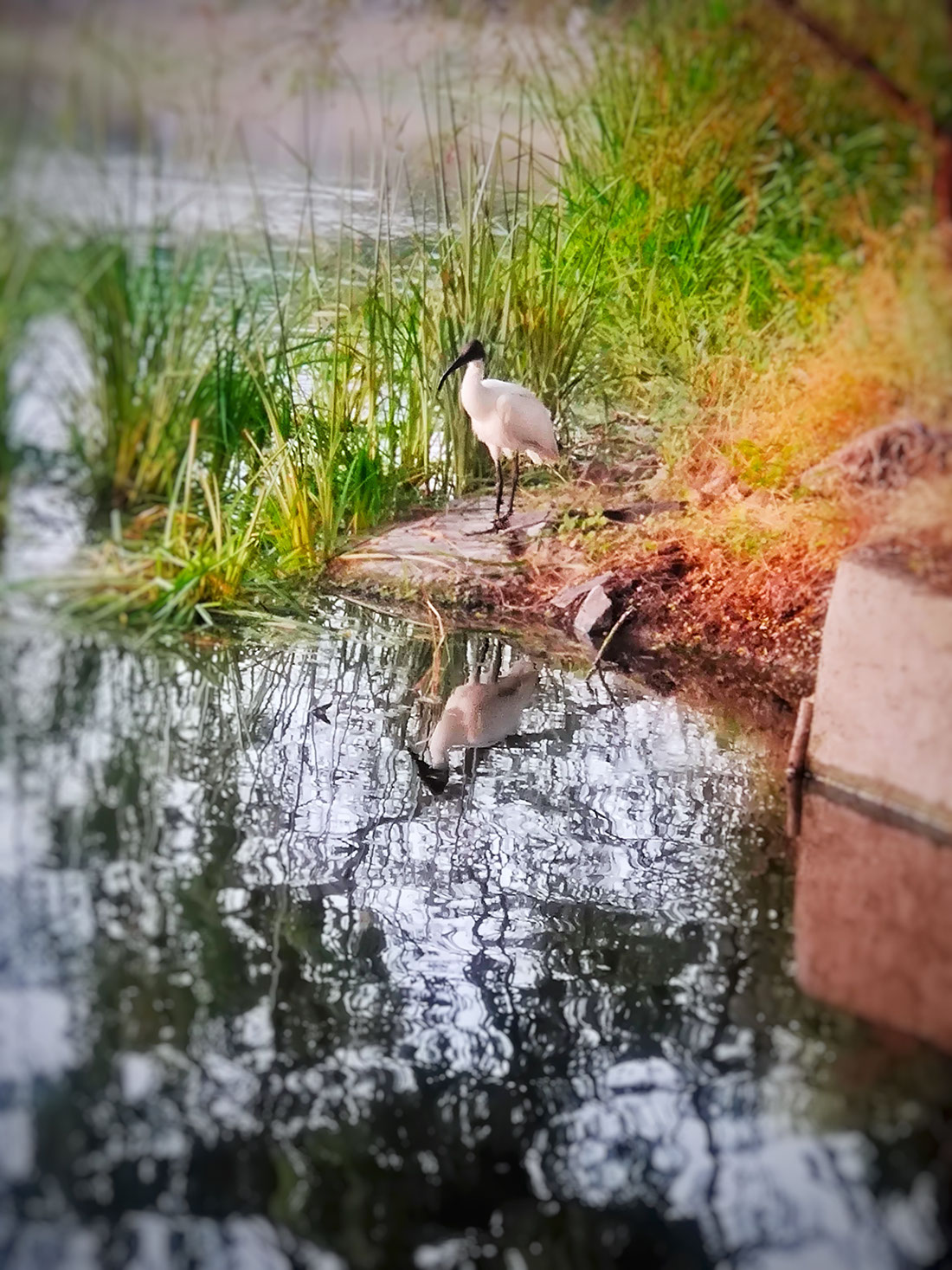
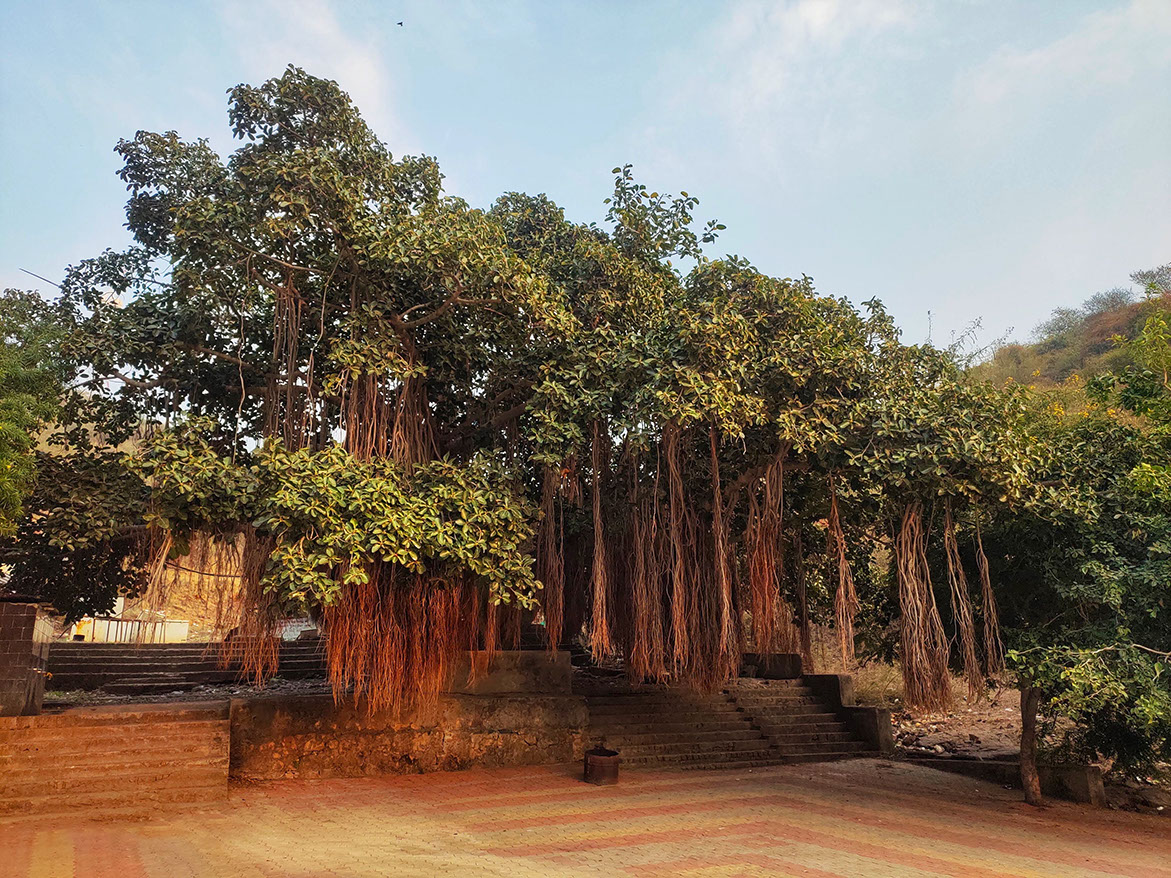
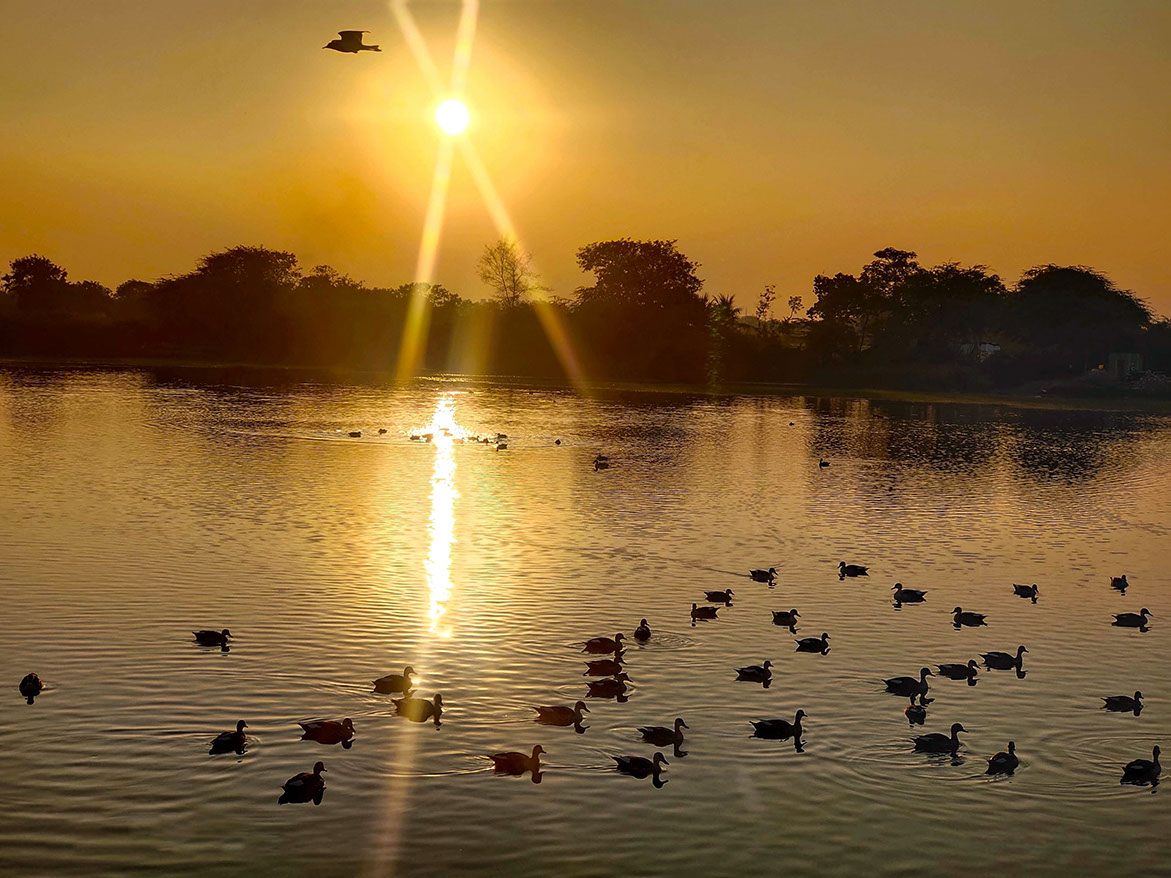
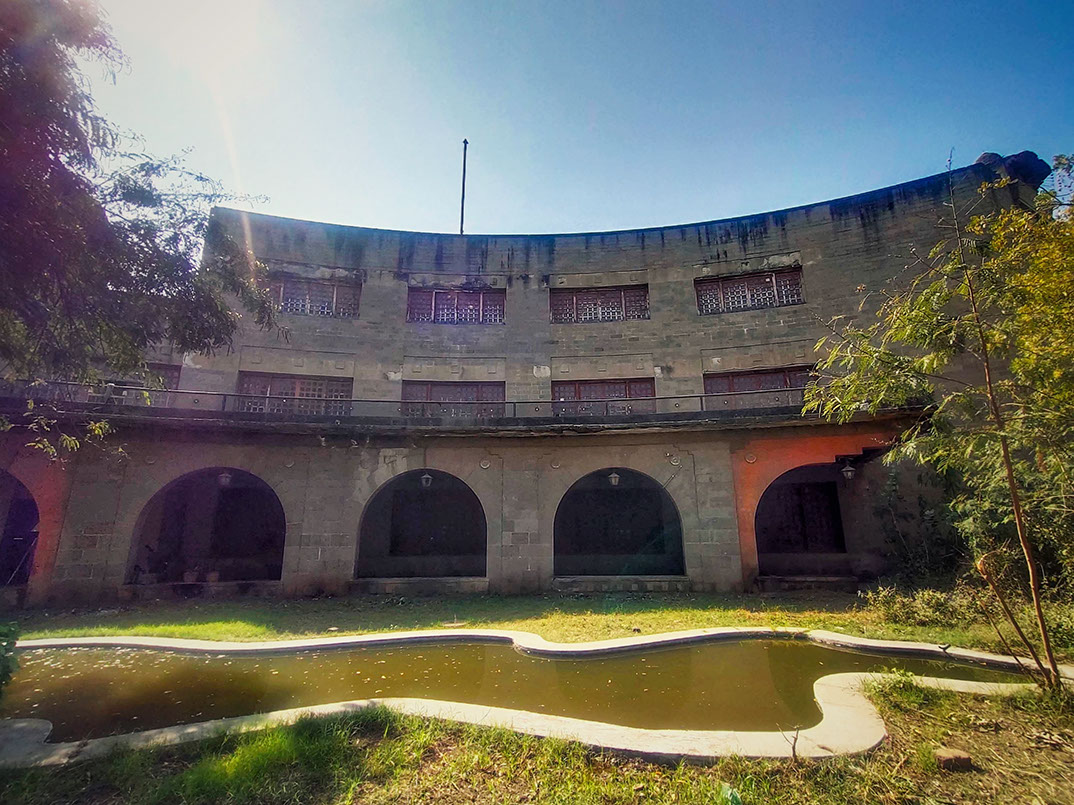
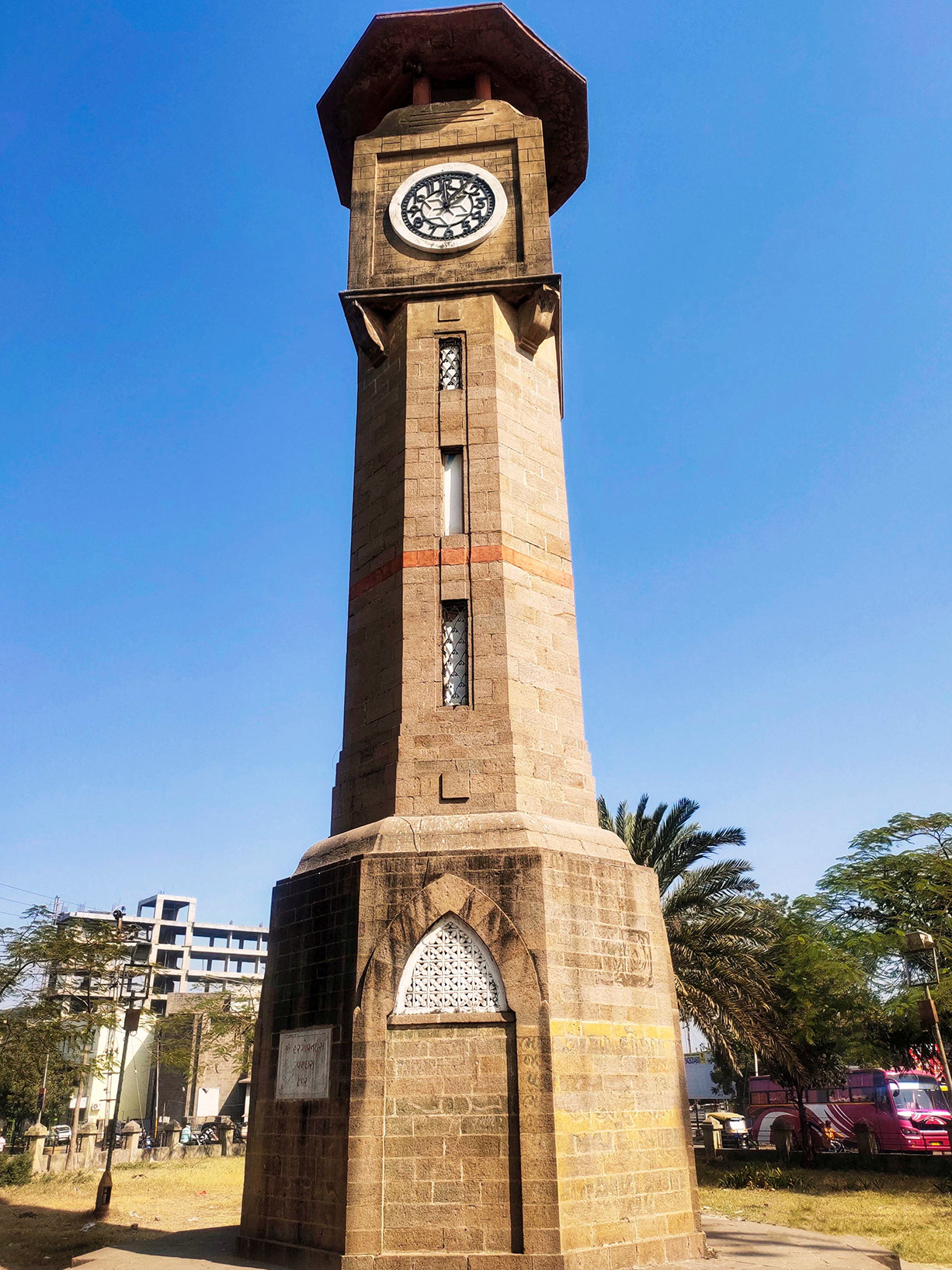
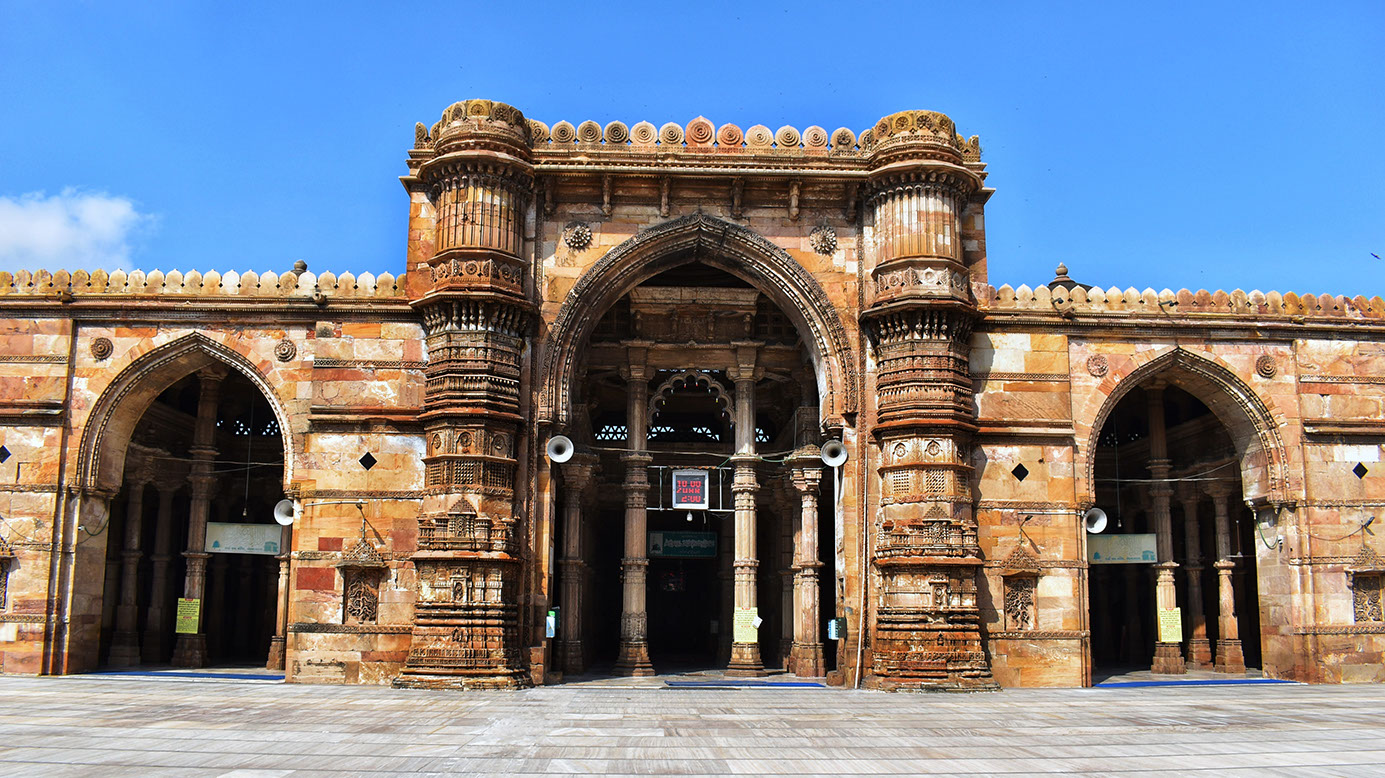
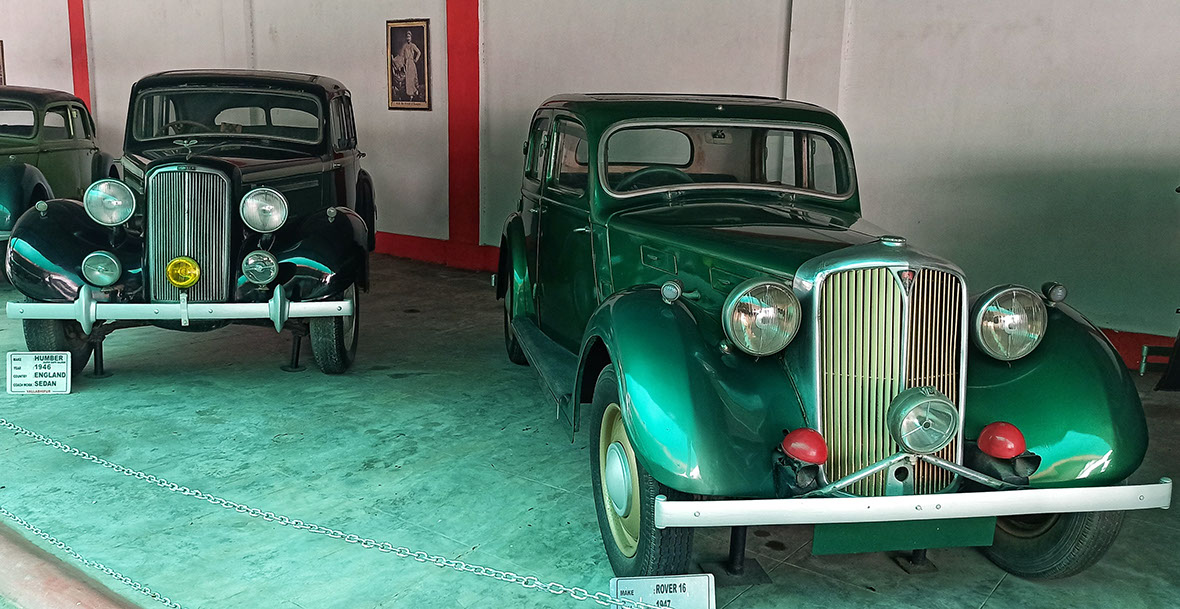
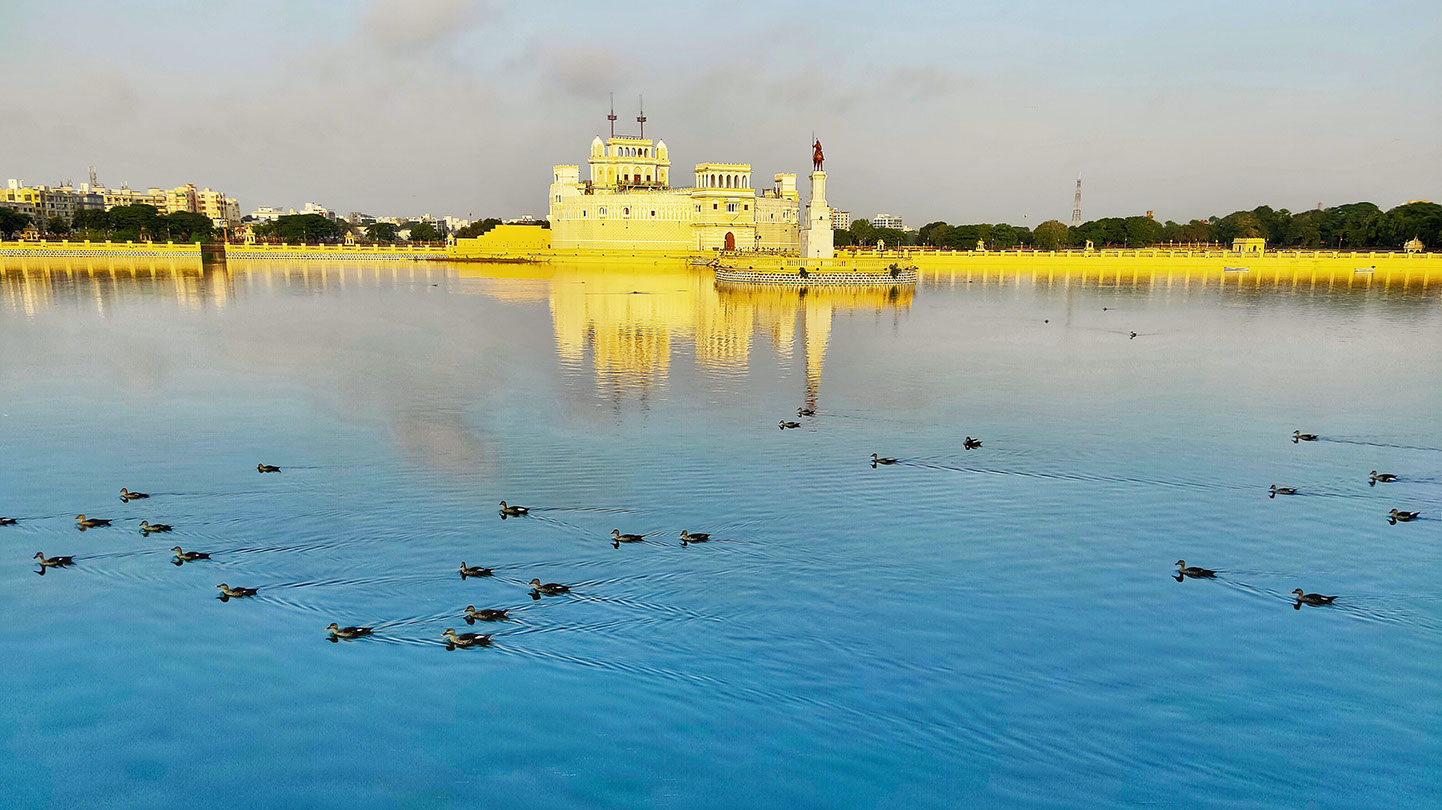

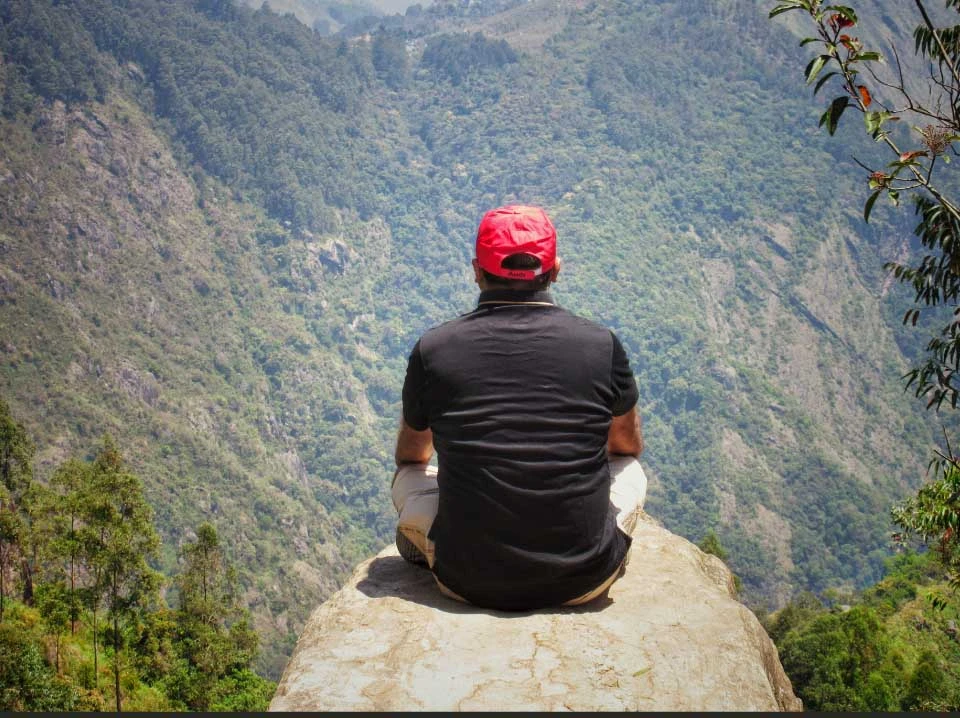
Name
Email
Comment